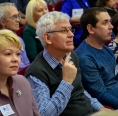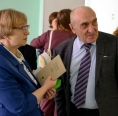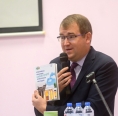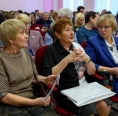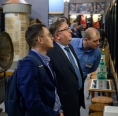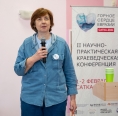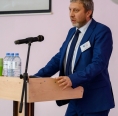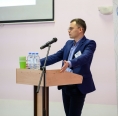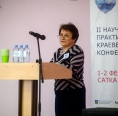-
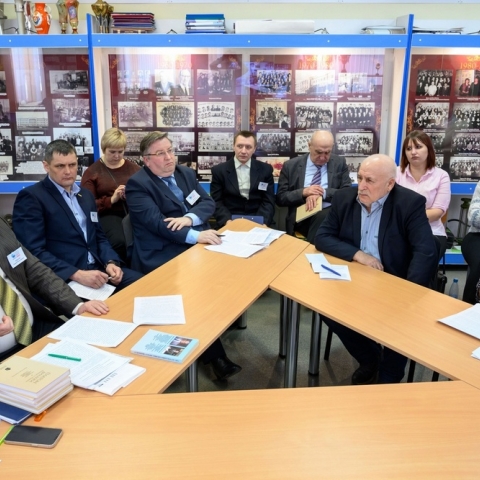
NEW FACTS AND THE “GOLDEN PEA”: WHICH PAGES OF THE HISTORY OF SATKA AND MAGNEZIT DID THE CONFERENCE OPEN?
The II Scientific and Practical Local Lore Conference The Mountain Heart of Eurasia welcomed over 200 participants.
The event held on February 1-2 at the Satka Mining and Ceramic College named after A.K. Savin was organized by the Satka District Administration and the Satka District Development Assistance Fund with the support from Magnezit Group and other partners, including the Sobranie Fund.
The conference started with a plenary session where the first speakers gave their presentations. For instance, Maria Shub, Head of the Culturology and Sociology Department at the Chelyabinsk State Institute of Culture presented the results of a culturological survey conducted in 2020.
‘My colleagues and I polled around 200 Satkans of various age groups, male and female – just passers-by. Our conclusion was that Satka is an example of a positive identity type. The residents feel an emotional connection to the town; they associate their lives with Satka; they don't want to leave here and don’t encourage their loved ones to do so. For most of the respondents, Satka is associated with the beauty of nature and a unique industrial enterprise rather than with anything negative,’ Maria Shub says. By the end of the conference, her presentation was named the best presentation given at a plenary session.
Nikolai Antipin, PhD (history), Deputy Director of the United State Archive of Chelyabinsk Region gave the presentation: The Great Terror in Satka District: Victims of Mass Political Persecution. Tatyana Taranina, PhD in Geology and Mineralogy, Head of the Geological Museum for Training of the South Ural State University, told the audience about Vladimir Yurovsky, history teacher, the geologist, who first discovered the lemezit deposit (the presentation won a special award). Philologists Yelizaveta Borisova, PhD and Yulia Krivoschapova, PhD, representing the Ural Federal University named after the first President of Russia Boris Yeltsin, presented the history and methods of toponymic expedition work of their university. By the way, their team is going to work in Satka District next summer.
Another presentation – Issedones, Arimaspians and Gryphons: the ‘Chinese’ Urals of Aristaeus of Proikonnesos – was given by Roman Svetlov, Doctor of Philosophy, Director of the Higher School of Philosophy, History and Social Sciences at the Immanuel Kant Baltic Federal University. His talk ended with a surprise: Dr. Svetlov presented the Satka Museum of Local Lore with the gift of a modern translation of Plato's dialogs: five books, published with the support from Magnezit Group and the Sobranie Fund.
PLANS AND PARTICULARS
Then the conference split into sections: Archives;
Engineering-Technical and Industrial Study of Local Lore;
Nature and Tourism;
Culture and Creativity;
History and People;
Philosophy and Culturology. A total of about 60 presentations were given within those sections over two days of the conference. We will cover the most interesting topics and discoveries in more detail in our subsequent posts.
The best presentation in the Archives section was The Reports to the Geological Committee by A. F. Schuppe as Evidence Relevant to the History of the Satka Area, a report prepared by Aleksandr Rychkov. The conclusions drawn by the author of the presentation were included in the resolution adopted by the conference.
Another remarkable presentation in the archive section was Archive Documents: Facts and Myths of the Porozhsky Ferroalloy Plant by Yelena Kamendrovskaya, a research officer of the Satka Museum of Local Lore.
It should be noted that topics associated with Magnezit also gave cause to research within the section Engineering-Technical and Industrial Study of Local Lore. For example, Mikhail Bazanov, PhD in History, Chief Archaeographer of the State Archive of Chelyabinsk Region, in his talk: Fighting Dust: An Episode in History of Magnezit Plant, presented a lot of facts that amazed the audience (he was talking about the late 1930’s). His colleague, Yelena Rokhatsevich, told the audience about military training at the Magnezit plant during the Great Patriotic War (based on documents from the region's state archive). Our presentations included: Modernization of the Magnezit Plant in Satka Supervised by the Chelyabinsk Economic Council (by Andrey Budanov, PhD in History, independent researcher from Chelyabinsk);
The Experience of Museumisation in Industrial History of a Minor City in the Urals (by Tatyana Bystrova, Dr. of Philosophy, Senior Lecturer, Ural Federal University, Yekaterinburg);
The Art of the Intellect. People × Ideas × Achievements (by Anastasia Chizhikova, a specialist of the Magnezit Museum). The winning presentation was The Magnezit Plant During the Great Patriotic War by Yury Goryachev, an independent researcher from Yekaterinburg.
The best presentation in the section Nature and Tourism was the talk Entomological Discoveries by P. S. Pallas, by Aleksandr Razboinikov, a member of the international Creative Union of Artists, and a member of the Russian Society of Entomologists (Chelyabinsk).
The best presentation prize in the section Culture and Creativity was awarded to Galina Gontar, a teacher at the Satka Mining and Ceramic College named after A.K. Savin, the author of the presentation: The Artistic Creation Tree of the Artist Veniamin Petrovich Karyakin.
The prizes in the sections History and People and Philosophy and Culturology were awarded, respectively, to Natalya Bogdanyuk, research officer at the Satka Museum of Local Lore, for the presentation: The Satka Plant in Watercolor by Pavel Svinyin, and Svetlana Dinaburg, senior professor at the Philosophy and Law Department of the Perm National Research Polytechnic University, for the presentation: “It Is As If ... – Stage Art Elements in Therapy.
Another special thing about this conference is the amount of interest it attracted among students, including secondary school pupils of Satka, Bakala and Romanovka as well as students of the district's art schools. That caused the Satka District Development Assistance Fund and the Magnezitovets newspaper introduced a special prize that will be awarded for the best presentation by young participants.
BY THE WAY:
It is the first time that the conference organized exhibitions as part of its program:
Zyuratkul Through the Eyes of Chelyabinsk Artists (first at the Satka Mining and Ceramic College, soon at the Magnezit Cultural Center);
Kasly Today (open at the Magnezit Cultural Center through the end of February);
Alexander I’s Travels in the Urals (at the Satka Museum of Local Lore).
Source: Magnezitovets. Photo by: Vasily Maksimov
-
26.08 - 26.08
DIARY OF THE THIRD INDUSTRIAL BIENNALE
-
28.11 - 28.11
MY SATKA FESTIVAL WINS THE CONTEST OF CORPORATE VOLUNTEER PROJECTS
-
13.10 - 15.10
COOPERATION WITH VGIBL NAMED AFTER M.I. RUDOMINO

